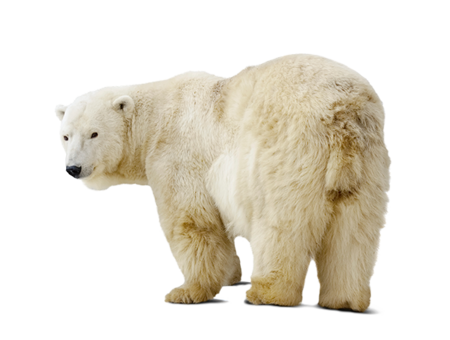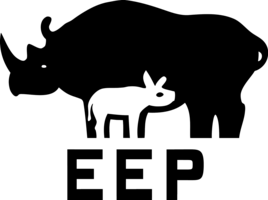Polar Bear
Ursus maritimus
![[Translate to English:] [Translate to English:]](/fileadmin/_processed_/7/6/csm_eisbaer-tierpark-hellabrunn-polarwelt-tierlexikon_e230afbbe5.jpg)
- Family
- Bears (Ursidae)
- Weight
- ♀ 150–300 kg, ♂ 300–600 kg
- Habitat
- Coasts with tundra vegetation, islands and pack ice, ice shelves
Digestive naps
In the Arctic summer, when the pack ice retreats rapidly, hunting for seals becomes a difficult task for the polar bears. To conserve energy, they take naps during the day to enable them to be more active at night, just like their prey.

Warm coat
Polar bears have a long, thick coat of insulated fur. The air spaces between the hairs trap the animal’s body heat, preventing heat loss. The fur is oily and water repellent, allowing the polar bear to easily shake itself dry after a swim.
The polar bear has a layer of blubber up to 10 cm thick that sits just beneath the skin, which insulates it from the cold and serves as a food store during hibernation.
Distribution


Hellabrunn Zoo participates in the European Endangered Species Programmes